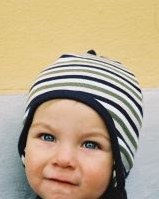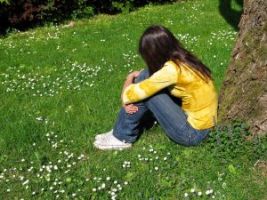
It’s official. Depression is real among kids as young as three.
In a study lead by Dr. Joan Luby, a psychiatrist at Washington University in St. Louis, researchers found that preschoolers with depression had a 4 times greater likelihood of major depressive disorder one or two years later than preschoolers who didn’t have depression. The study was funded by the National Institute of Mental Health and just published in the August issue of “Archives of General Psychiatry.”
I know what most people are thinking, or at least I think I do because I heard plenty of opinions back when my son was exhibiting troublesome behavior in preschool, which felt like the terrible twos, threes, fours, and fives … “Oh God, here we go again … trying to fit the kids somewhere into the DSM-IV (shrink’s Bible) so Big Pharma can get its greedy hands all over that innocent child.
I chose to exhaust the behavioral therapies that we, as a family, could learn, not because I don’t believe that there is a place for medicine–friends of mine have put their kids on drugs and I think that was absolutely the best solution for them–but that David responded to a few adjustments in how we run the house, and to more structure. I’m aware of the lack of research available today on treating kids, and so I think if your kid can learn adopt some helpful cognitive behavioral techniques and behavioral modifications, then start there. But that doesn’t work for everyone. Some kids need the medication to assist them with the other stuff. Thank God we have it for them.
Ultimately, I am glad this study was published and is getting some publicity. Not to scare all the moms out there with three-year-olds whose tantrums lasts an hour. But as a gentle prodding to pay careful attention to symptoms of overwhelming guilt, chronic sadness, persistent weepiness, extreme irritability, and temper tantrums that involve biting, kicking, or hitting.
I’m not saying parents should, upon recognizing these symptoms, lace their kids’ peanut butter and jelly sandwiches with 5 milligrams of Prozac. But I do think it’s worth investigating some behavioral strategies to relieve some of the sadness and anxiety.
I wish my mom had done that for me.
Not that I fault her for not taking me to a shrink when I was 4 or 5. Get real! I was 4! But the signs were very much there, from the beginning: insidious rituals, like praying four rosaries before breakfast, that I had to perform or else I would go to hell; nightmares that had me shrieking in the middle of the night; chronic crying; extreme separation anxiety; and guilt … oh man, don’t get me started on guilt. Over the stupidest things! Like accidentally plucking a blade of grass from my neighbor’s lawn. Had I been taught–through some cognitive behavioral strategies–to manage my emotions, then maybe, just maybe, I might have dodged the serious mood disorder I have today.
One theory of depression suggests that any major disruption early in life, like trauma, abuse, or neglect, may contribute to permanent changes in the brain that lead to an overproduction of cotropin-releasing factor (CRF), which in turn stimulates the pituitary gland to release hormones that cause depression. According to psychiatric geneticist James Potash, M.D., stress can trigger a cascade of steroid hormones that likely alters the hippocampus–belonging to the brain’s limbic system, the seat of human emotions–and retard its new growth.
That’s why it’s so important to treat depression at a young age. So that the tender brain doesn’t start form under that stress, and predict a life of depression.
Dr. David Fassler, a University of Vermont psychiatry professor says that depression in the very young is still pretty rare, but without treatment “can have a devastating and often lasting effect on a child’s social and emotional development.”
I can provide proof of that.
* Click here to subscribe to Beyond Blue! And click here to follow Therese on Twitter. And click here to join Group Beyond Blue, a depression support group. Now stop clicking.

